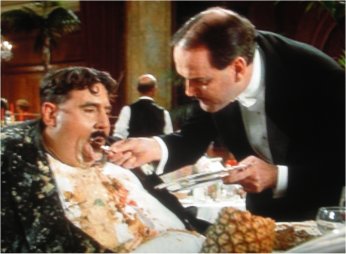
"It's only 'wafer thin.'"
Every few months we get a story about new battery or battery replacement technology and it never goes anywhere.
Zzzzz.
Plastic? Can’t use plastic. Plastic comes from big bad oil. No No No....not plastic.
How much of a charge can it hold. There are stories of paper based batteries as well. Don’t see those in my cell phone.
It's not a battery - it's just a capacitor using new material and capacitor-held energy can be quite dangerous.
This isn't going to fly any better than prior capacitive storage schemes to replace batteries.
This could be great. No more nasty heavy metals like Cadmium going in to land fills.

"It's only 'wafer thin.'"
Catchy headline -- but a battery, no matter what its chemical composition or whether it produces or stores electricity, is still called a battery ....
I’ll believe it when I see them on the store shelves.
His team's prototype - which is around five inches square and wafer-thin - takes five seconds to charge from a normal power supply and can light an LED for 20 minutes.Assuming a 10-milliamp load from the LED, a 20-minute run time for this device equates to a capacity of:
10 mA * 0.333 hours = 3.333 mAh
For comparison, a common non-rechargeable alkaline AA battery typically has a capacity of about 2700 mAh.
I remember back in the 70’s “futurists” were claiming we would be eating food made from plastic.
Cheers!
Cheers!
This is a non-event... as one of the comments following the story points out...
“1) As many people have stated, this is a supercapacitor. They’ve been around for decades, and they’re an American invention.
2) There’s no way this is the end of the battery - batteries can be made just as thin and have hundreds and potentially thousands of times the energy density of this supercapacitor. Powering a standard LED for 20 minutes requires a very small amount of energy - a mobile phone battery would keep the same LED lit for at least two days, and they’re a fair bit smaller than 5 inches square. How is a supercapacitor ever going to power a mobile phone/iPod? A battery is the only way forward for a low current application.
3) This is being reported as if it’s a scientific invention - it’s not, it just seems to be an engineering group making thin-film supercaps to stick in car door panels or something like that. It’s barely even news!
For the record, I work in a research group specialising in batteries and supercaps.
- Matt, Southampton, 06/2/2010 17:16”
Waiting for the perfect transducer invention—that is where cold weather causes it to emit heat wavelets and in hot weather it releases cold instead. Tiny transducers aligning the peripheral walls of buildings would be fantastic and never needing electrical AC power to operate or sustain.
British con artists looking for idiots to fund them!